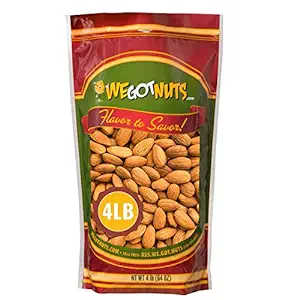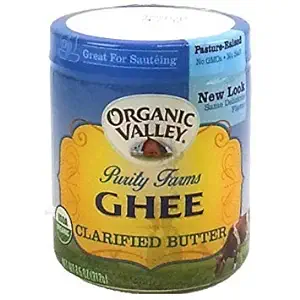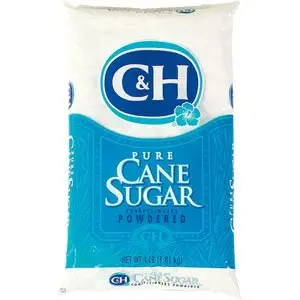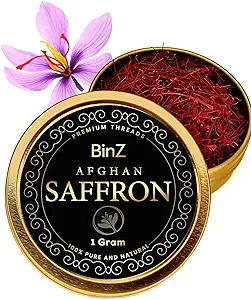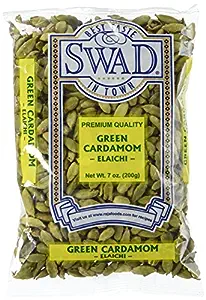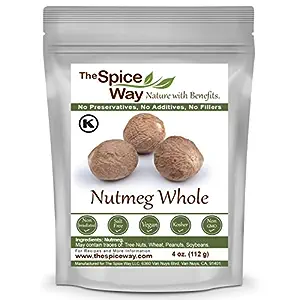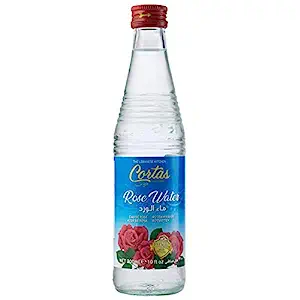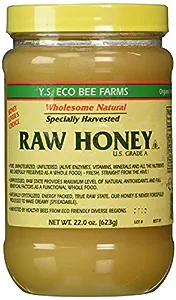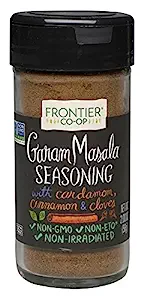Art of Badam Halwa: A Beginner’s Guide
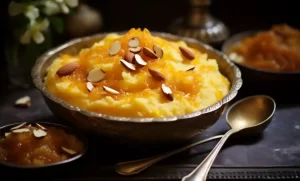
Indulging in the rich and aromatic world of Badam Halwa is a journey through the heart of Indian sweets. This delectable dessert, crafted from the finest almonds, has a special place in the tapestry of Indian culinary traditions. Beyond its delicious taste and velvety texture, Badam Halwa carries deep cultural significance, woven into the fabric of festive celebrations and family gatherings.
Badam Halwa isn’t just a dessert; it’s a cultural emblem, often gracing the tables during auspicious occasions like weddings, festivals, and religious ceremonies. Its preparation is an art form, passed down through generations, symbolizing warmth, generosity, and the sweetness of life. Each spoonful carries the essence of tradition, connecting individuals to their heritage in every bite.
In a world dominated by convenience, there’s a unique charm in crafting desserts at home. Badam Halwa, with its intricate yet rewarding preparation process, beckons enthusiasts to embark on a culinary adventure. The kitchen becomes a canvas, and the ingredients, a palette to create a masterpiece. Homemade Badam Halwa isn’t just a treat for the taste buds; it’s a labor of love, a gesture that speaks volumes about the care and effort invested in creating something truly special. As the aroma of roasting almonds fills the kitchen, it evokes memories and creates new moments, making the experience of indulging in Badam Halwa all the more delightful.
Key Ingredients for Making Badam Halwa
Crafting the perfect Badam Halwa requires a meticulous selection of ingredients, each playing a crucial role in achieving the exquisite balance of flavors and textures that define this traditional Indian sweet. Here’s a detailed list of the key components and their significance:
- Almonds (Badam): The star of the show, almonds bring a rich, nutty flavor and a velvety consistency to the halwa. They are also a powerhouse of nutrients, adding a healthful touch to this indulgent treat.
- Ghee (Clarified Butter): Ghee contributes to the luxurious texture and imparts a rich, buttery taste to the halwa. Its high smoke point makes it ideal for roasting almonds and enhancing their flavor.
- Milk: Milk is the binding agent that brings all the ingredients together. It adds creaminess to the halwa and complements the nuttiness of almonds.
- Sugar: Sweetness is a key element in Badam Halwa. Sugar not only sweetens the dish but also balances the natural bitterness of almonds, creating a harmonious flavor profile.
- Saffron (Kesar): Saffron threads infuse the halwa with a golden hue and a subtle floral aroma. They add a touch of luxury and elevate the visual appeal of the dessert.
- Cardamom (Elaichi) Powder: Cardamom brings a warm, citrusy flavor to the halwa, complementing the sweetness and adding a hint of spice. It contributes to the overall aromatic experience.
- Nutmeg (Jaiphal) Powder: Nutmeg adds depth to the flavor profile with its warm and slightly sweet notes. Used sparingly, it enhances the overall richness of the halwa.
- Water: While seemingly simple, water plays a crucial role in achieving the right consistency of the halwa. It helps in cooking the almonds to perfection and ensures a smooth texture.
- Rose Water: A few drops of rose water introduce a subtle floral essence to the halwa, providing a refreshing contrast to the richness of almonds and ghee.
- Chopped Nuts (for garnish): Garnishing the Badam Halwa with chopped nuts, such as pistachios or cashews, adds a delightful crunch and visual appeal. It also introduces additional flavors to each bite.
In the art of making Badam Halwa, the harmonious interplay of these ingredients is key to creating a dessert that not only satisfies the sweet tooth but also captivates the senses with its complexity and depth of flavor.
Almond Flour vs. Whole Almonds
In the realm of Badam Halwa, the choice between almond flour and whole almonds can significantly influence the outcome of this beloved dessert. Let’s delve into the considerations of using almond flour as a substitute and the pros and cons of sticking with whole almonds.
Almond flour, finely ground from blanched almonds, is a convenient alternative that some recipes allow. However, the substitution isn’t a one-to-one ratio, and adjustments are needed in the overall recipe.
Pros of Using Almond Flour:
Convenience: Almond flour is readily available and saves the time and effort required to blanch, peel, and grind whole almonds.
Consistent Texture: Almond flour results in a smoother texture, providing a more uniform consistency to the halwa.
Gluten-Free Option: For those with gluten sensitivities, almond flour offers a gluten-free alternative to whole almonds.
Cons of Using Almond Flour:
Flavor Intensity: The flavor profile of almond flour may differ from that of whole almonds, potentially impacting the depth and intensity of the nutty taste.
Nutrient Loss: The process of making almond flour may lead to some nutrient loss compared to using whole almonds, which are more nutritionally dense.
Potential for Overmixing: Almond flour can become dense if overmixed, affecting the overall texture of the halwa.
Pros of Using Whole Almonds:
Robust Flavor: Whole almonds bring a robust, natural almond flavor to the halwa, enhancing its authenticity.
Nutritional Value: Whole almonds are a nutrient powerhouse, providing essential vitamins, minerals, and healthy fats.
Customizable Texture: Grinding whole almonds at home allows for control over the coarseness, contributing to a textured and chunky halwa if desired.
Cons of Using Whole Almonds:
Preparation Time: Working with whole almonds requires additional steps such as blanching and peeling, adding to the preparation time.
Texture Variability: Depending on the grinding technique, the texture of the halwa may vary, and some may prefer a smoother consistency.
Potential for Bitterness: If not blanched and peeled properly, the thin brown skin on almonds may contribute a slightly bitter taste.
Ultimately, the choice between almond flour and whole almonds in Badam Halwa comes down to personal preference and dietary considerations. While almond flour offers convenience and consistency, whole almonds provide a more authentic flavor and nutritional density. Experimentation with both options allows for tailoring the halwa to individual taste preferences, ensuring a delightful and satisfying dessert experience.
Cooking Time for Badam Halwa
Mastering the art of crafting Badam Halwa requires patience, precision, and a love for the process. Here’s a step-by-step guide to help beginners navigate the journey from raw almonds to a luscious, aromatic dessert. Alongside the steps, find some tips to make your Badam Halwa endeavor seamless and delightful.
Ingredients:
- 1 cup whole almonds
- 1 cup sugar
- 1/2 cup ghee (clarified butter)
- 1 cup milk
- A pinch of saffron strands
- 1/2 teaspoon cardamom powder
- A pinch of nutmeg powder
- 1 tablespoon rose water
- Chopped nuts for garnish (optional)
Step-by-Step Guide:
- Begin by soaking the almonds in hot water for a few hours.
- Peel the softened almonds and set them aside.
- Grind the peeled almonds into a coarse paste. Add a little milk to facilitate the grinding process.
- Warm a tablespoon of milk and soak the saffron strands in it. Let it sit to infuse the milk with saffron’s color and aroma.
- In a heavy-bottomed pan, melt ghee over medium heat.
- Add the almond paste and stir continuously to avoid lumps.
- Pour in the remaining milk gradually, stirring continuously. This helps in achieving a smooth consistency.
- Add sugar and continue stirring. The sugar will dissolve, and the mixture will thicken.
- Add cardamom powder and nutmeg powder for a fragrant touch. Mix well.
- Pour in the saffron-infused milk, giving the halwa its characteristic golden hue. Stir thoroughly.
- Add rose water for a subtle floral essence. Continue to cook until the halwa reaches a desired consistency.
- Garnish with chopped nuts if desired.
- Serve the Badam Halwa warm, allowing everyone to savor the delightful blend of flavors.
Tips for Beginners
- Soak Almonds Adequately: Ensure that the almonds are soaked enough to make the peeling process easier. Soaking for a few hours or overnight is recommended.
- Control the Heat: Maintain a medium heat level throughout the process to prevent the halwa from sticking to the pan or burning.
- Consistent Stirring: Stir continuously, especially when cooking the almond paste and adding milk, to prevent lumps and achieve a smooth texture.
- Gradual Sugar Addition: Add sugar gradually, allowing it to dissolve completely. Taste as you go to achieve the desired level of sweetness.
- Customize Aromatics: Adjust the amount of cardamom, nutmeg, and saffron based on personal preference. These aromatics can be powerful, so a little goes a long way.
- Patience is Key: Allow the halwa to cook at its own pace. The slow cooking process ensures the melding of flavors and the perfect consistency.
With this step-by-step guide and handy tips, even beginners can embark on the delightful journey of preparing Badam Halwa. Enjoy the process, savor the aromas, and relish the reward of a homemade Indian sweet that’s nothing short of a culinary masterpiece.
Cultural Significance of Badam Halwa in Indian Celebrations
Badam Halwa, beyond its exquisite taste and culinary allure, holds a special place in Indian culture, intricately woven into the fabric of celebrations, traditions, and familial bonds. Let’s delve into the rich cultural significance of Badam Halwa in the context of Indian festivities.
Diwali (The Festival of Lights):
Badam Halwa often takes center stage during Diwali, symbolizing the sweetness of life and the prosperity associated with the festival.
Families share this delectable treat with neighbors and friends as a gesture of goodwill and festive cheer.
Weddings and Special Occasions:
In Indian weddings and other joyous occasions, Badam Halwa is a staple sweet, showcasing the family’s hospitality and the richness of the celebration.
The dessert is often part of elaborate feasts, serving as a sweet finale to grand meals.
Symbolism of Prosperity:
The inclusion of almonds in Badam Halwa is symbolic of prosperity and good fortune. Almonds, with their inherent richness, are believed to bring abundance and blessings to the household.
Serving Badam Halwa is considered an auspicious act, signifying the hope for a sweet and prosperous life.
Poojas and Religious Ceremonies:
Badam Halwa plays a role in religious ceremonies and poojas, where it is offered as prasad—a sacred food blessed during worship.
Its preparation is often accompanied by rituals, prayers, and a sense of reverence for the divine.
Family Bonding:
The process of making Badam Halwa is often a communal affair, with family members coming together to prepare this special dish.
Passing down the recipe through generations fosters a sense of continuity and connection to cultural roots.
Culinary Heritage:
Badam Halwa is a testament to the rich culinary heritage of India. The art of preparing this delicacy has been handed down from one generation to the next, preserving the authenticity of flavors and techniques.
The dessert serves as a link to the past, allowing individuals to taste and experience the cultural legacy of their ancestors.
Winter Festivities:
As winter sets in, Badam Halwa becomes a comfort food, providing warmth and energy during the colder months.
Its popularity increases during festivals like Lohri and Pongal, where the richness of almonds is celebrated.
Badam Halwa transcends its role as a dessert; it becomes a cultural ambassador, carrying the essence of joy, prosperity, and tradition. Whether shared during festivals, weddings, or intimate family gatherings, this sweet treat is a manifestation of the rich cultural tapestry that defines India—a tapestry woven with threads of flavor, tradition, and heartfelt celebrations.
Badam Halwa, known for its indulgent taste and cultural significance, can be adapted to cater to various dietary preferences. Here are variations that align with vegan and vegetarian choices, as well as options for those following a gluten-free diet.
Vegan Badam Halwa:
Ingredients:
- Almonds
- Vegan butter or coconut oil (instead of ghee)
- Plant-based milk (almond milk, soy milk, or coconut milk)
- Vegan-friendly sweetener (agave syrup, maple syrup, or any plant-based sweetener)
- Saffron, cardamom, nutmeg, rose water
- Chopped nuts for garnish (optional)
Method:
- Follow the same steps as the traditional recipe, substituting ghee with vegan butter or coconut oil.
- Use plant-based milk instead of dairy milk.
- Choose a vegan-friendly sweetener to replace traditional sugar.
- Ensure the saffron, cardamom, nutmeg, and rose water are vegan-approved.
- Garnish with chopped nuts if desired.
Vegetarian Badam Halwa:
Ingredients:
- Almonds
- Ghee
- Dairy milk
- Sugar
- Saffron, cardamom, nutmeg, rose water
- Chopped nuts for garnish (optional)
Method:
- Stick to the traditional recipe using ghee and dairy milk.
- Follow the steps for the classic preparation, maintaining the original flavors and textures.
- Garnish with chopped nuts for an added crunch.
Gluten-Free Badam Halwa:
Ingredients:
- Almonds
- Ghee
- Dairy or plant-based milk
- Sugar
- Saffron, cardamom, nutmeg, rose water
- Chopped nuts for garnish (optional)
Gluten-Free Alternative:
- Confirm that all ingredients, including spices and flavorings, are gluten-free.
- Avoid cross-contamination by using gluten-free certified products.
- Ensure the ghee used is free from any gluten-containing additives.
Method:
- Stick to the traditional recipe, ensuring all components are gluten-free.
- Confirm that any processed or packaged ingredients are labeled gluten-free.
- Garnish with chopped nuts for added texture.
Adapting Badam Halwa to different dietary preferences opens the door to a wider audience, allowing everyone to savor the joy of this delectable dessert. Whether it’s the rich vegan version, the classic vegetarian rendition, or the gluten-free adaptation, each variation preserves the essence of Badam Halwa while accommodating diverse dietary needs. These variations ensure that the cultural delight of Badam Halwa can be enjoyed by individuals with varying tastes and preferences, making it a truly inclusive and delightful treat for all.
Quick Recipe for Beginners
Badam Halwa need not be an intimidating dish, especially for those new to cooking. This simplified recipe offers quick and easy steps, along with time-saving tips, ensuring a delightful culinary experience without compromising on the rich flavors.
Ingredients:
- 1 cup whole almonds
- 1/2 cup ghee (clarified butter)
- 1 cup milk
- 1 cup sugar
- 1/4 teaspoon cardamom powder
- A pinch of saffron strands
- 1 tablespoon rose water
- Chopped nuts for garnish (optional)
Quick Steps:
- Soak almonds in hot water for a few hours to soften.
- Peel the almonds to remove the skin, making the grinding process easier.
- Grind the peeled almonds into a coarse paste. Add a splash of milk to facilitate the grinding.
- Warm a tablespoon of milk and soak saffron strands in it. Set aside to infuse.
- In a pan, melt ghee over medium heat.
- Add the almond paste and sauté for 5-7 minutes until it turns golden and releases a nutty aroma.
- Pour in the milk gradually while stirring continuously to avoid lumps. This speeds up the cooking process.
- Add sugar and continue stirring until the sugar dissolves completely.
- Incorporate cardamom powder for fragrance.
- Pour in the saffron-infused milk and rose water. Stir well for a minute.
- Cook the mixture until it reaches the desired halwa consistency, which should take around 10-15 minutes.
- Garnish with chopped nuts if desired.
- Serve the quick Badam Halwa warm, savoring the delightful blend of flavors.
Time-Saving Tips:
- Pre-Peel Almonds: Purchase pre-peeled almonds or blanched almond flakes to skip the soaking and peeling steps.
- Use Pre-ground Almond Flour: Opt for pre-ground almond flour if time is a constraint. Adjust the quantity based on the recipe.
- Ready-Made Saffron Extract: Use ready-made saffron extract or powder for a quicker infusion instead of soaking saffron strands.
- Buy Cardamom Powder: Purchase pre-ground cardamom powder to eliminate the need for grinding cardamom pods.
- Pre-Measure Ingredients: Pre-measure and arrange ingredients before starting to streamline the cooking process.
- Skip Garnishing: If time is limited, skip the garnishing step or use pre-chopped nuts.
- Choose Quick-Dissolving Sugar: Opt for quick-dissolving sugar to speed up the sweetening process.
By incorporating these time-saving tips, beginners can enjoy the satisfaction of preparing Badam Halwa without feeling overwhelmed. This quick recipe ensures that the delicious taste of this traditional Indian sweet is accessible to even those taking their first steps in the kitchen.
Storing Badam Halwa for Longer Shelf Life
Badam Halwa, with its rich texture and flavors, can be stored for an extended shelf life with proper storage techniques. Follow these guidelines and tips to ensure the longevity and freshness of this delectable Indian sweet.
Cool to Room Temperature:
- Allow the Badam Halwa to cool to room temperature before attempting to store it. Hot or warm halwa can create condensation inside the storage container, leading to moisture and potential spoilage.
Airtight Container:
- Transfer the cooled Badam Halwa to an airtight container. This helps in preventing exposure to air, which can lead to the drying out of the halwa.
Refrigeration:
- For an extended shelf life, refrigerate the Badam Halwa. The cool temperature helps slow down any microbial activity, keeping the halwa fresh for a more extended period.
Individual Portioning:
- Consider portioning the Badam Halwa into smaller servings before refrigerating. This way, you can take out only what you need without repeatedly exposing the entire batch to air and moisture.
Layer with Parchment Paper:
- If stacking portions in the container, place a layer of parchment paper between each layer. This prevents the halwa from sticking together and helps maintain its individual texture.
Avoid Mixing with Other Odors:
- Store Badam Halwa away from strong-smelling foods in the refrigerator. Halwa tends to absorb odors, impacting its original flavor.
Consume within a Week:
- Consume the stored Badam Halwa within a week for optimal freshness. While it may last longer, the texture and flavor are best within the first few days.
Freezing (Long-Term Storage):
- If you plan to store Badam Halwa for an even longer duration, consider freezing it. Place individual portions in airtight containers or freezer-safe bags.
- Thaw frozen halwa in the refrigerator for a gradual return to room temperature.
Reheat Only What You Need:
When reheating Badam Halwa, heat only the portion you intend to consume. Repeated heating and cooling cycles can affect the texture.
Avoid Moisture:
Ensure that the storage container is dry before transferring the halwa. Moisture can lead to the development of mold.
Check for Signs of Spoilage:
Regularly inspect the stored Badam Halwa for any signs of mold, off smells, or changes in texture. Discard if any spoilage is detected.
Keep in Original Container:
If the Badam Halwa comes in a sealable packaging, it’s often best to keep it in the original container to preserve freshness.
By following these storage techniques and freshness tips, you can enjoy Badam Halwa over an extended period, savoring its delightful taste and texture with each serving.
Similar Traditional Indian Desserts
Badam Halwa, though unique in its own right, belongs to a diverse array of traditional Indian desserts, each with its distinctive flavors, textures, and cultural significance. Let’s explore some desserts that share the richness and cultural heritage akin to Badam Halwa, spanning various regions of India.
Moong Dal Halwa:
Region: North India
Description: Made from yellow lentils (moong dal), ghee, sugar, and flavored with cardamom, Moong Dal Halwa is a rich and decadent dessert enjoyed during festivals and celebrations.
Gulab Jamun:
Region: Pan-India
Description: Soft, deep-fried dough balls made from khoya (reduced milk solids) and soaked in sugar syrup, Gulab Jamun is a classic Indian sweet served during festivities and special occasions.
Jalebi:
Region: Pan-India
Description: A popular street food and dessert, Jalebi consists of coiled, deep-fried batter soaked in sugar syrup. Its crisp texture and sweet syrup make it a favorite at fairs and celebrations.
Mysore Pak:
Region: South India (Mysore, Karnataka)
Description: A melt-in-the-mouth sweet made from besan (gram flour), ghee, and sugar, Mysore Pak has a fudgy texture and is often enjoyed during festivals like Diwali.
Rasgulla:
Region: East India (West Bengal, Odisha)
Description: Soft, spongy cheese balls soaked in sugar syrup, Rasgulla is a popular dessert in East India. It is often served at weddings and festivals.
Kheer:
Region: Pan-India
Description: A creamy rice pudding made with milk, rice, sugar, and flavored with cardamom and nuts, Kheer is a versatile dessert enjoyed across India, with regional variations.
Sheer Khurma:
Region: North India (particularly during Eid celebrations)
Description: A special dessert made with vermicelli, milk, and dried fruits, Sheer Khurma is a traditional sweet served during the festival of Eid.
Modak:
Region: West India (Maharashtra, particularly during Ganesh Chaturthi)
Description: Modak is a sweet dumpling made from rice flour or wheat flour, filled with jaggery and coconut. It is considered Lord Ganesha’s favorite and is a staple during the Ganesh Chaturthi festival.
Pinni:
Region: North India (Punjab)
Description: Pinni is a Punjabi sweet made from roasted wheat flour, ghee, sugar, and loaded with nuts. It is often prepared during winter months.
Patishapta:
Region: East India (particularly during Makar Sankranti)
Description: Patishapta is a Bengali dessert—a thin crepe filled with a mixture of coconut, khoya, and jaggery, folded into a roll. It’s a delicacy during the Makar Sankranti festival
Indian desserts are as diverse as the country itself, with each region contributing its unique flavors and culinary traditions. Exploring sweets like Badam Halwa allows one to delve into the rich tapestry of Indian culture, where the joy of celebrations is sweetened by an array of delightful traditional desserts.
Health Benefits and Nutritional Value
Badam Halwa, made primarily from almonds, offers a combination of rich flavors and potential health benefits. Let’s delve into the nutrient profile of Badam Halwa and explore the health advantages associated with consuming almonds.
Almonds:
- Protein: Almonds are a good source of plant-based protein, contributing to muscle repair and overall body function.
- Healthy Fats: Almonds contain monounsaturated and polyunsaturated fats, which are heart-healthy and support brain function.
- Fiber: A significant source of dietary fiber, almonds aid in digestion and contribute to a feeling of fullness.
- Vitamins and Minerals: Almonds provide essential vitamins and minerals, including vitamin E, magnesium, and phosphorus.
Ghee:
- Saturated Fats: Ghee, while high in saturated fats, contains healthy fatty acids that support various bodily functions.
Milk:
- Calcium and Vitamin D: Milk is a rich source of calcium and vitamin D, promoting bone health and overall immune function.
Sugar:
- Energy Source: Sugar provides a quick source of energy, but excessive consumption should be moderated for overall health.
Saffron, Cardamom, Nutmeg, Rose Water:
- Saffron: Rich in antioxidants, saffron contributes to the overall health benefits of Badam Halwa.
- Cardamom: Known for its anti-inflammatory properties, cardamom adds flavor and potential health advantages.
- Nutmeg: Offers antioxidants and may have anti-inflammatory effects.
- Rose Water: Adds a subtle fragrance and may have mild calming properties.
Health Advantages of Consuming Almonds
- The monounsaturated and polyunsaturated fats in almonds contribute to heart health by reducing LDL (bad) cholesterol levels.
- The combination of protein, fiber, and healthy fats in almonds can aid in weight management by promoting a feeling of fullness.
- Almonds are a good source of phosphorus and magnesium, essential for maintaining strong and healthy bones.
- The vitamin E content in almonds may contribute to cognitive function and protect against age-related cognitive decline.
- The fiber and healthy fats in almonds can help regulate blood sugar levels, making them a suitable snack for individuals with diabetes.
- Almonds contain antioxidants, including vitamin E, which help combat oxidative stress and inflammation in the body.
- The vitamins and minerals in almonds contribute to skin health, promoting a radiant complexion.
Caution
While Badam Halwa can offer health benefits, it is essential to consume it in moderation, especially considering its sugar and ghee content. Individuals with nut allergies should avoid almond-based products.
Badam Halwa, with its almond-rich composition, provides a blend of essential nutrients and potential health advantages. When enjoyed as part of a balanced diet, it can contribute to overall well-being, offering not only a delightful treat for the taste buds but also a dose of nutrition and potential health benefits.
Our Recommended Ingredients
Almonds


Almonds, packed with protein and healthy fats, add a delightful crunch to desserts like Badam Halwa. They are also a wholesome snack on their own or a versatile ingredient in various dishes.
Ghee


Ghee, clarified butter with a rich, nutty flavor, is a key ingredient in Badam Halwa. Its golden hue and aromatic profile enhance the overall taste and authenticity of this traditional Indian sweet.
Sugar


Sugar, the sweet foundation of desserts like Badam Halwa, lends its sweetness to create the perfect balance of flavors. It dissolves seamlessly, creating a delectable syrup that enhances the overall taste.
Saffron


Saffron, the golden-hued spice, imparts a unique flavor and a touch of luxury to Badam Halwa. Its aromatic notes elevate the overall culinary experience, making it a prized addition to this delectable dessert.
Cardamom


Cardamom, with its warm and aromatic profile, is the secret behind the captivating fragrance of Badam Halwa. Its subtle yet distinct flavor enhances the overall taste, making it a must-have spice.
Nutmeg


Nutmeg, with its warm and slightly sweet flavor, complements the spice palette of Badam Halwa. Its versatility adds depth and complexity, making it a key ingredient in this beloved Indian sweet.
Rose Water


Rose Water, with its subtle floral essence, adds a touch of sophistication to Badam Halwa. Its aromatic notes elevate the dessert, providing a unique and refreshing twist to the traditional flavor.
In Crux
In conclusion, Badam Halwa stands as a culinary gem within the tapestry of traditional Indian desserts, weaving together the rich flavors of almonds, ghee, and aromatic spices.
In essence, Badam Halwa is more than a dessert; it’s a celebration of culture, tradition, and the joy of savoring a delightful culinary masterpiece. As you embark on the journey of making Badam Halwa at home, may the aroma of roasted almonds and the warmth of aromatic spices fill your kitchen, creating moments of joy and connection with the rich culinary heritage of India. Happy cooking!

